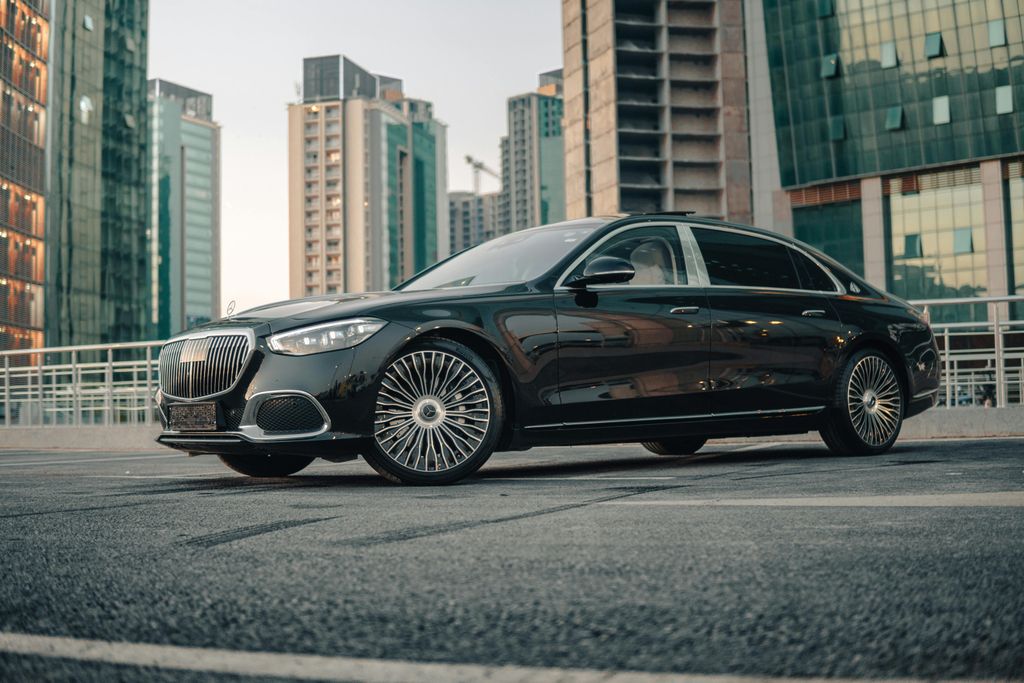
The allure of a luxury vehicle is undeniable. It’s a promise of refined sophistication, exhilarating performance, and cutting-edge technology, all wrapped in an exquisite package that signals success and discerning taste. When prospective buyers consider a high-end car, they often anticipate an ownership experience devoid of the common headaches associated with more budget-friendly options, expecting flawless engineering and unwavering dependability.
Yet, the glossy exteriors and plush interiors sometimes conceal a less glamorous reality. The notion that a higher price tag inherently guarantees superior quality and streamlined mechanics, keeping your vehicle on the road and out of the service bay, isn’t always accurate. In fact, some models from prestigious marques are, surprisingly, plagued by a series of reliability issues that can transform the dream of luxury car ownership into a frustrating cycle of repairs and unexpected costs.
This article aims to cut through the veneer of luxury, providing a detailed, objective assessment of several high-end models that, despite their initial appeal, have garnered attention for significant reliability deficiencies. By exploring these particular vehicles and their recurring problems—be it electrical malfunctions, problematic transmissions, or frequent software glitches—we shed light on the crucial pitfalls that can undermine the premium feel and long-term satisfaction of these otherwise desirable cars. Understanding these potential drawbacks is paramount for any luxury car buyer, ensuring that an investment remains a source of pleasure, not a cause for concern.

1. **2023 Alfa Romeo Giulia**The 2023 Alfa Romeo Giulia, with its undeniably dynamic performance and striking Italian styling, stands out in the luxury compact car segment. It is engineered to deliver an engaging driving experience, a characteristic that draws enthusiasts who appreciate its sporty heritage and responsiveness. However, this appeal is frequently overshadowed by significant concerns regarding its reliability, making it a focal point of disappointment for many owners.
Owners often report persistent problems with the vehicle’s electrical systems, which can lead to a cascade of issues. These electrical faults are not minor inconveniences; they frequently manifest as unexpected behavior from vehicle controls, impacting the car’s basic functions. Furthermore, the infotainment system is often cited for its propensity to glitch, freezing or becoming unresponsive at critical moments.
Beyond basic controls and infotainment, the navigation system is also susceptible to errors, causing frustration and undermining the practicality of a luxury sedan designed for seamless travel. These technical difficulties necessitate multiple, often unscheduled, trips to the dealership, interrupting daily routines and significantly detracting from the user experience. For a vehicle marketed on superior design and engineering, these recurring issues undeniably raise questions about its long-term dependability and overall value, ultimately ranking it ‘dead last in luxury compact cars based on Consumer Reports ratings, with a predicted reliability of just 2 out of 5.’
Car Model Information: 2020 Lexus RX 350 Base
Name: Alfa Romeo Giulia (Type 105)
Caption: Alfa Romeo Giulia Super
Manufacturer: Alfa Romeo
Production: 1962–1978
Assembly: Portello (district of Milan),Alfa Romeo Portello Plant,Milan
Designer: Giuseppe Scarnati
Class: Compact executive car
BodyStyle: notchback,Sedan (car)
Layout: Front-engine, rear-wheel-drive layout
Related: Alfa Romeo 105/115 Series Coupés,Alfa Romeo 1750 Berlina,Alfa Romeo Gran Sport Quattroruote,Alfa Romeo Spider
Engine: Alfa Romeo Twin Cam engine,1.6 L Twin Cam I4 (petrol),Perkins Engines
Transmission: Manual transmission
Wheelbase: 2510 mm
Abbr: on
Length: 4140 mm
Width: 1560 mm
Height: 1430 mm
Weight: convert
Predecessor: Alfa Romeo Giulietta (750/101)
Successor: Alfa Romeo Giulietta (116)
Sp: uk
Categories: 1970s cars, Alfa Romeo vehicles, Articles with short description, CS1 Italian-language sources (it), Cars introduced in 1962
Summary: Alfa Romeo Giulia (Italian pronunciation: [ˈdʒuːlja]) is the name of three not directly related model (line)s from Italian carmaker Alfa Romeo. The first were the four-door Type 105 entry-level compact executive sports sedans produced from 1962 to 1978; the second are the updated (mainly up-engined) Spider, Sprint, and Sprint Speciale Alfa Giuliettas, and in 2015, Alfa Romeo revived the Giulia name, again for a compact executive car (type 952).
Alfa Romeo was one of the first mainstream manufacturers to put a powerful engine in a light-weight 1 tonne (2,205 lb) four-door car for mass production. The Type 105 Giulia was equipped with a light alloy twin overhead camshaft four-cylinder engine similar to that of the earlier Giulietta (750/101) range, available in 1.3-litre (1,290 cc) and 1.6-litre (1,570 cc) versions. Various configurations of carburetors and tuning produced power outputs from about 80 to about 110 bhp (55 to 75 kW), coupled in most cases to 5-speed manual transmission.
Giulia sedans were noted for lively handling and impressive acceleration among small European four-door sedans of their era, especially considering modest engine sizes offered. The popular Super version with the twin carburettor 1.6 litre engine had a top speed of 170 km/h (106 mph) and accelerated from 0 to 100 km/h (62 mph) in about 12 seconds, better than many sports cars of the late 1960s and early 1970s. When leaving the factory all variations of the Giulia originally fitted either Pirelli Cinturato 165HR14 or 155HR15 tyres (CA67).
The styling of the three-box four-door sedan was somewhat wanting, with its three main volumes all truly square and boxy, softened only by detailing of the front and bonnet, roofline, and boot. Using a wind tunnel during development helped designers to find a remarkably aerodynamic shape with a drag coefficient of Cd=0.34, particularly low for a saloon of the era.
The Giulia Spider was succeeded by the Alfa Romeo Spider (105/115) in 1966.
Get more information about: Alfa Romeo Giulia
Buying a high-performing used car >>>
Brand: Alfa Romeo Model: Giulia
Price: $30,981 Mileage: 81,179 mi.
Read more about: The Real Cost of Ownership: 10 Sedans That Become Money Pits After Five Years (And How to Avoid Them)
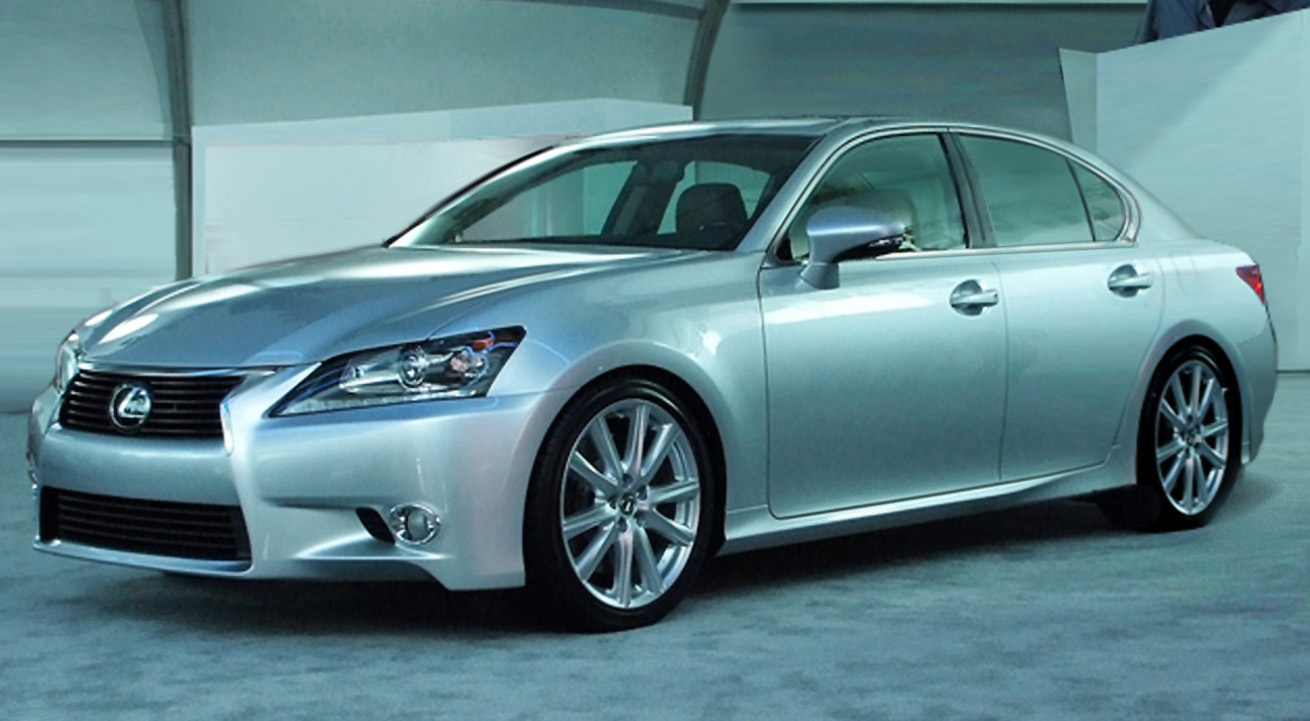
2. **Lexus ES 350**The Lexus ES 350 has long been celebrated for its commitment to luxurious amenities and an exceptionally smooth ride quality, hallmarks of the Lexus brand. It promises a serene and comfortable driving experience, often positioning itself as a reliable choice for those seeking premium comfort without excessive fuss. However, even this acclaimed model has faced criticism in key areas that are somewhat atypical for a brand renowned for its reliability.
One of the primary concerns highlighted by owners pertains to the transmission system. Reports indicate that the ES 350 can exhibit ‘jerky shifts and a general lack of responsiveness’—a characteristic that is notably out of place in a premium vehicle striving for seamless power delivery. Such transmission issues can detract significantly from the smooth, composed driving experience that buyers expect from a luxury sedan, transforming what should be a refined journey into an intermittently disconcerting one.
Furthermore, despite the generally high comfort levels associated with Lexus interiors, some drivers find the seats to be uncomfortable, particularly on longer journeys. This specific ergonomic oversight can diminish the overall luxury experience, as discomfort during extended drives is a critical factor for many luxury car owners. These issues, though not universal, are significant enough to potentially dissuade prospective buyers who are looking for a truly hassle-free and consistently comfortable luxury car experience.
Car Model Information: 2020 Lexus RX 350 Base
Name: Lexus ES
Caption: Lexus ES 350 (GSZ10)
Manufacturer: Toyota
Aka: unbulleted list
Production: June 1989 – present
Class: unbulleted list
BodyStyle: unbulleted list
Layout: unbulleted list
ModelYears: 1990–present
Categories: 1990s cars, 2000s cars, 2010s cars, 2020s cars, All-wheel-drive vehicles
Summary: The Lexus ES is a mid-size luxury sedan marketed since 1989 by Lexus, the luxury division of Toyota, across multiple generations, each offering V6 engines and a front-engine, front-wheel-drive layout. The first five generations of the ES used the Toyota Camry platform, while the latter generations are more closely related to both the Camry and the Avalon. Manual transmissions were offered until 1993, a lower-displacement inline-four engine became an option in Asian markets in 2010, and a gasoline-electric hybrid version was introduced in 2012. The ES was Lexus’s only front-wheel drive vehicle until 1998, when the related RX was introduced, and the sedan occupied the entry-level luxury car segment of the Lexus lineup in North America and other regions until the debut of the IS in 1999. The ES name stands for “Executive Sedan”. However, some Lexus importers use the name, “Elegant Sedan”. Introduced in 1989, the first generation ES 250 was one of two vehicles in Lexus’s debut range, along with the LS 400. The second generation ES 300 debuted in 1991, followed by the third generation ES 300 in 1996, and the fourth generation ES 300/330 in 2001. The first- through fourth generation sedans shared body styling elements with Japan-market Toyota sedans, and a domestic market equivalent, the Toyota Windom, was sold until the launch of the fifth generation ES in 2006. The word “Windom” is a combination of “win” and the suffix “dom” expresses a state of perpetual victory. The fifth generation ES used body styling marketed by Lexus as L-finesse and debuted in early 2006 as a 2007 model. The sixth generation ES debuted in the first half of 2012 as a 2013 model, and features increased cabin dimensions due to a longer wheelbase which is shared with the full-size XX40 series Avalon. Lexus has positioned the ES in the comfort luxury segment, with an emphasis on interior amenities, quietness, and ride quality, in contrast with more firm-riding sport sedans. Buyers seeking more performance-focused models are targeted by the Lexus IS and rival makes, with such models offering a sportier drive with differently tuned suspensions. In Europe, Japan and other markets where it was not available until the seventh generation model, the GS sport sedans occupy the mid-size category in the Lexus lineup until it was cancelled August 2020. In the United States, the ES has been the best-selling Lexus sedan for over fifteen years.
Get more information about: Lexus ES
Buying a high-performing used car >>>
Brand: Lexus Model: ES 350
Price: $30,981 Mileage: 81,179 mi.
Read more about: Steer Clear: The 6 Minivans Families Regretted Driving Off the Lot – A Deep Dive into Automotive Disappointments

3. **2019 Audi A6**Audi’s A6 series has traditionally represented a compelling blend of sophisticated design, cutting-edge technology, and a driving experience synonymous with German engineering precision. The 2019 Audi A6, in particular, was introduced with high expectations, promising an advanced user interface and a refined cabin. However, this model year has, surprisingly, faced its share of challenges, particularly concerning its integrated technological systems and general reliability.
A central point of contention for many owners is the Multi Media Interface (MMI) infotainment system, which is a cornerstone of the vehicle’s user experience. Reports indicate frequent system freezes, unresponsive touch screens, and glitches that directly affect vital functions like navigation and entertainment. These issues are not only profoundly frustrating for drivers but can also be costly and time-consuming to rectify, undermining the perceived value of its advanced features.
Adding to these technological woes, the vehicle’s various sensors can malfunction, leading to a host of problems. Owners have reported instances where these sensors trigger ‘false warnings’ or, more critically, ‘failing to alert at crucial times,’ thereby compromising both convenience and fundamental safety. Such inconsistencies highlight a significant gap between expectation and reality for a luxury sedan, leading to ‘a reliability rating of just 1 out of 5, according to Consumer Reports.’ Consumers have specifically ‘reported trouble with noises, leaks, squeaks and rattles, as well as engine and suspension/steering issues.’
Car Model Information: 2015 Audi A6 3.0T Premium Plus
Name: Audi A6
Caption: 2025 Audi A6 (C9)
Manufacturer: Audi AG
Production: 1994–present,2000–present (China)
Class: Executive car
BodyStyle: Sedan (car)
Layout: longitudinal engine,FF layout
Sp: uk
Predecessor: Audi 100
Categories: 2000s cars, 2010s cars, 2020s cars, All-wheel-drive vehicles, All Wikipedia articles written in British English
Summary: The Audi A6 is an executive car manufactured by the German company Audi since 1994. Now in its sixth generation, the successor to the Audi 100 is manufactured in Neckarsulm, Germany, and is available in saloon and estate configurations, the latter marketed by Audi as the Avant. Audi’s internal numbering treats the A6 as a continuation of the Audi 100 lineage, with the initial A6 designated as a member of the C4-series, followed by the C5, C6, C7, C8 and the C9. The related Audi A7 is essentially a Sportback (liftback) version of the C7-series and C8-series A6 but is marketed under its own separate identity and model designation.
All generations of the A6 have offered either front-wheel-drive or Torsen-based four-wheel-drive, marketed by Audi as their quattro system. The A6 has also been used as the basis for the company’s Allroad models since 1999.
Get more information about: Audi A6
Buying a high-performing used car >>>
Brand: Audi Model: A6
Price: $13,460 Mileage: 91,733 mi.
Read more about: Why Austin, Texas is the New A-List Haven: A Deep Dive into Celebrity Homes and Lifestyles

4. **2023 Jaguar F-PACE**The 2023 Jaguar F-PACE embodies an appealing combination of luxury and utility, designed to attract upscale buyers seeking a stylish and capable SUV. With its ‘powerful acceleration, incredible comfort and cute, sporty design,’ it initially presents itself as a formidable contender in the competitive luxury SUV market. However, despite its outward charm and dynamic capabilities, this model is unfortunately ‘low-rated the vehicle in predicted reliability and owner satisfaction categories’ according to ConsumerReports.org.
Central to its reliability woes are persistent problems with its in-car electronics. These electrical faults can lead to erratic behavior of the digital displays and various control systems, turning what should be a seamless interaction into a frustrating ordeal. Such electronic inconsistencies not only diminish the luxury experience but also interfere with essential driving functions, posing significant inconveniences for owners.
Furthermore, a more critical concern lies with the engine cooling system, which has been identified as prone to failures. Cooling system malfunctions can pose serious risks to engine performance and longevity, potentially leading to expensive and extensive repairs. These pervasive reliability issues necessitate frequent, costly trips to service centers, effectively undermining the overall driving enjoyment and the long-term ownership experience of this otherwise desirable SUV, illustrating how the ‘report at Consumer Reports hews closely to the punchline of the Jaguar joke of old.’
Car Model Information: 2018 Jaguar F-PACE 35t Prestige
Name: Jaguar F-Pace
Manufacturer: Jaguar Land Rover
ModelCode: X761
Production: February 2016–present
Assembly: Solihull plant
Class: Compact crossover SUV
BodyStyle: SUV
Layout: ubl
Platform: JLR D7a
Related: Jaguar XE,Jaguar XF (X260),Range Rover Velar
Engine: ubl
Motor: 106 kW
Abbr: on
Transmission: Manual transmission,ZF 8HP transmission
Drivetrain: Mild Hybrid
Battery: Kilowatt-hour,Lithium-ion battery
Wheelbase: 2874 mm
Length: 4747 mm
Width: 2071 mm
Height: 1664 mm
Weight: Convert
Designer: Ian Callum
Sp: uk
Categories: 2020s cars, All Wikipedia articles written in British English, Articles with short description, CS1 maint: archived copy as title, Cars introduced in 2016
Summary: The Jaguar F-Pace (X761) is a compact luxury crossover SUV made by Jaguar Land Rover, a British car manufacturer, under their Jaguar marque. It is the first Jaguar SUV. It was formally announced at the 2015 North American International Auto Show in Detroit, with sales commencing in 2016 following an unveiling at the 2015 International Motor Show Germany in Frankfurt.
The design of the F-Pace is based on the Jaguar C-X17 concept car, which was unveiled on September 9, 2013, at the Frankfurt Motor Show. The 2017 Jaguar F-Pace has been named the honorary winner of the 2017 World Car of the Year and World Car Design of the Year Awards at the New York International Auto Show. The F-Pace is built at Jaguar Land Rover’s Solihull plant along with the Range Rover Velar and employs an additional 1,300 workers.
Get more information about: Jaguar F-Pace
Buying a high-performing used car >>>
Brand: Jaguar Model: F-PACE
Price: $20,498 Mileage: 51,314 mi.
Read more about: The Real Cost of Ownership: 10 Sedans That Become Money Pits After Five Years (And How to Avoid Them)
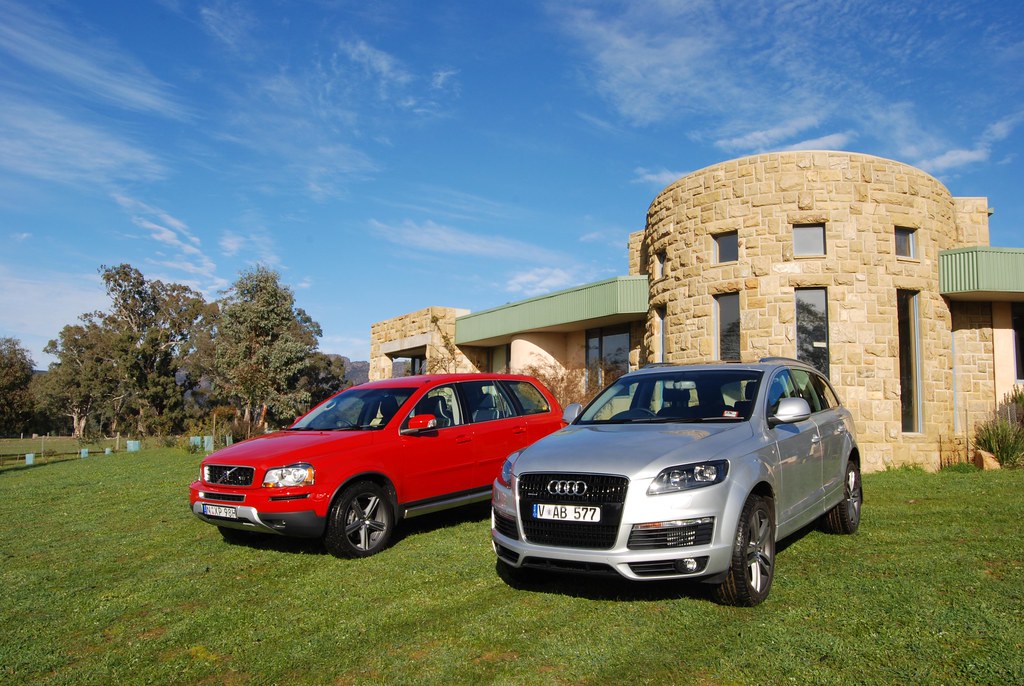
5. **Audi Q7**Recognized for its expansive interiors and a suite of advanced technological offerings, the Audi Q7 positions itself as a premium family SUV, promising comfort, space, and innovation. However, beneath its sophisticated facade, the Q7 has developed a reputation for issues that significantly impact the ownership experience, particularly in terms of long-term reliability and cost-effectiveness. These problems tend to challenge the perception of luxury ownership.
Owners frequently report encountering ‘high maintenance costs’ and ‘frequent breakdowns of critical components.’ Among the most common and troubling issues are problems with the electrical systems, which can affect a wide array of vehicle functions. Similarly, brake-related issues are also frequently cited, raising concerns not only about convenience but also about safety, which is paramount in any vehicle, especially a family-focused SUV.
These problems are particularly challenging because they often emerge unexpectedly, demanding immediate attention and costly repairs. Such unforeseen expenses and service interruptions make the Q7 a less attractive option for those who prioritize steadfast reliability and predictable cost-effectiveness in their luxury vehicles. For a brand that epitomizes precision, these recurring issues can be a significant deterrent for prospective buyers.
Car Model Information: 2023 Audi Q7 45 Premium Plus
Name: Audi Q7
Manufacturer: Audi AG
Production: November 2005–present
ModelYears: 2006–present
Class: Full-size,luxury SUV
BodyStyle: SUV
Layout: Longitudinal engine,front-engine, four-wheel-drive
Sp: uk
Categories: 2010s cars, 2020s cars, All-wheel-drive vehicles, All Wikipedia articles written in British English, All articles with dead external links
Summary: The Audi Q7 is a crossover SUV made by the German manufacturer Audi, unveiled in September 2005 at the Frankfurt Motor Show. Production of this seven-seater SUV began in November 2005 at the Volkswagen Bratislava Plant in Bratislava, Slovakia.
The Q7 was the first SUV sold by Audi and went on sale in 2006. Later, Audi’s second SUV, the Q5, was unveiled as a 2009 model. Audi has since unveiled a third SUV model, the Q3, which went on sale in the third quarter of 2011, and a fourth SUV model, the Q2, which went on sale in November 2016. The Q7 shares a Volkswagen Group MLB platform and chassis with the Bentley Bentayga, Lamborghini Urus, Porsche Cayenne and the Volkswagen Touareg.
The Q7 is the second largest vehicle from Audi, being surpassed by the Q6 since 2022. While the Q7 has been the flagship SUV in Audi’s product portfolio, a top-of-the-line model with a lower roof, called the Audi Q8, was released in 2018.
It was one of the vehicles involved in the Volkswagen emissions scandal, with the company ordered to buy back some of the affected cars manufactured between 2009 and 2012. The Q7 is also subject to hundreds of NTSB complaints with many relating to potentially catastrophic engine failure issues, and a class-action lawsuit related to squealing brakes.
Get more information about: Audi Q7
Buying a high-performing used car >>>
Brand: Audi Model: Q7
Price: $34,710 Mileage: 53,211 mi.
Read more about: 15 Vehicles Millennials Are Steering Clear Of: Unpacking the Generational Divide in Automotive Appreciation
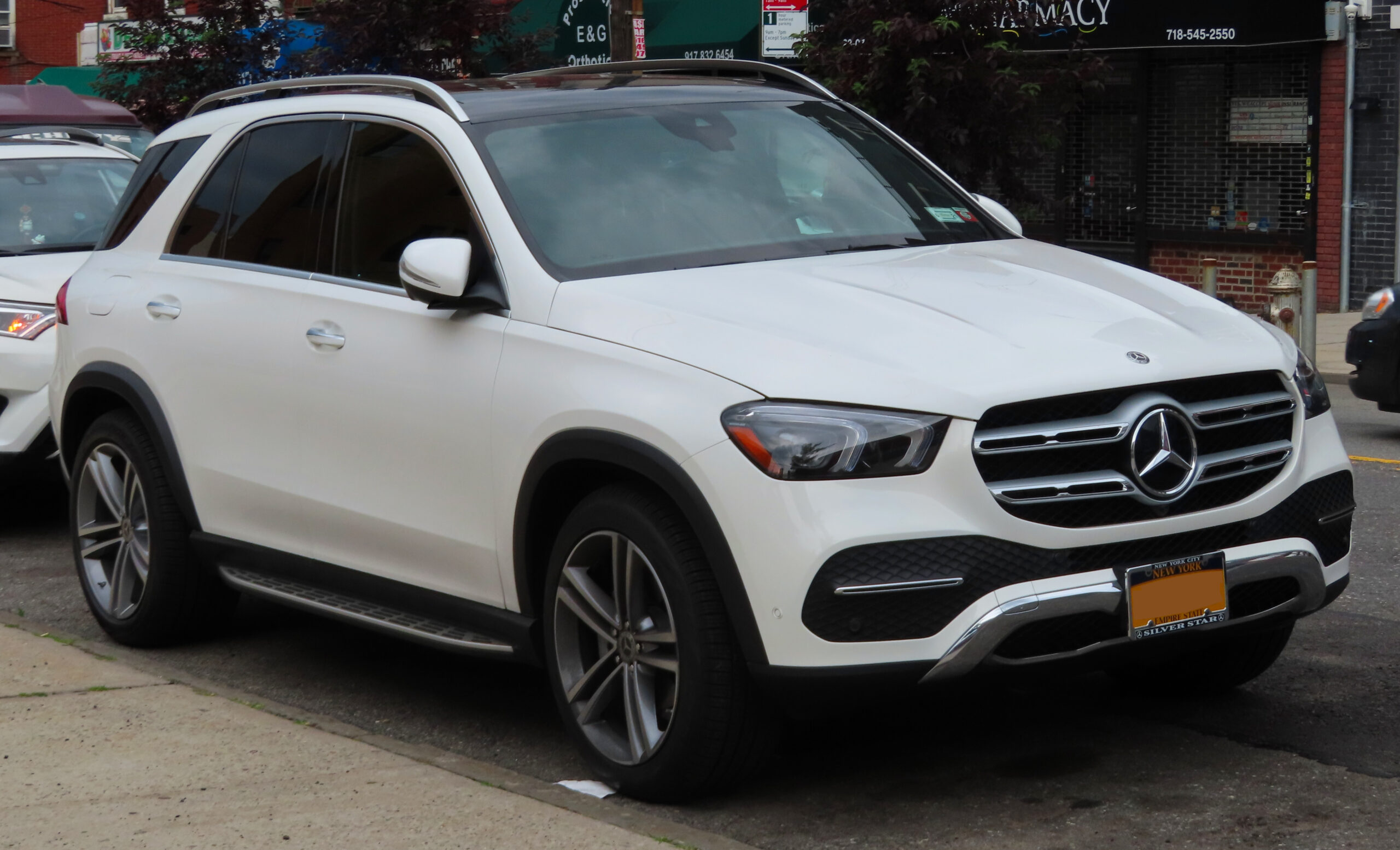
6. **2020 Mercedes-Benz GLE**In the luxury SUV segment, the 2020 Mercedes-Benz GLE aimed to set high standards, combining plush interiors, advanced features, and the esteemed Mercedes-Benz badge. It offers an opulent cabin, designed to provide supreme comfort and cutting-edge technology. However, this particular model year has been significantly let down by its electrical systems and the relatively new MBUX infotainment system, which have shown to be unexpectedly prone to malfunctions.
These electrical and software glitches are far from trivial, affecting a broad spectrum of vehicle operations. Owners have reported issues impacting everything ‘from the navigation system to climate control,’ leading to considerable discomfort and inconvenience during daily driving. Such interruptions undermine the seamless, high-tech experience that Mercedes-Benz strives to deliver, often leaving owners frustrated with an otherwise premium offering.
The frequent necessity for trips to the service center to address these pervasive glitches can significantly mar the ownership experience. For a brand that has long epitomized automotive luxury and reliability, these consistent issues with critical systems pose a substantial disappointment. They highlight a disconnect between the brand’s premium promise and the practical reality of day-to-day dependability, challenging buyer expectations of a top-tier SUV.
Read more about: Bawse-Level Bling: The 10 Most Shocking Custom Paint Jobs in Rick Ross’s Legendary Car Collection
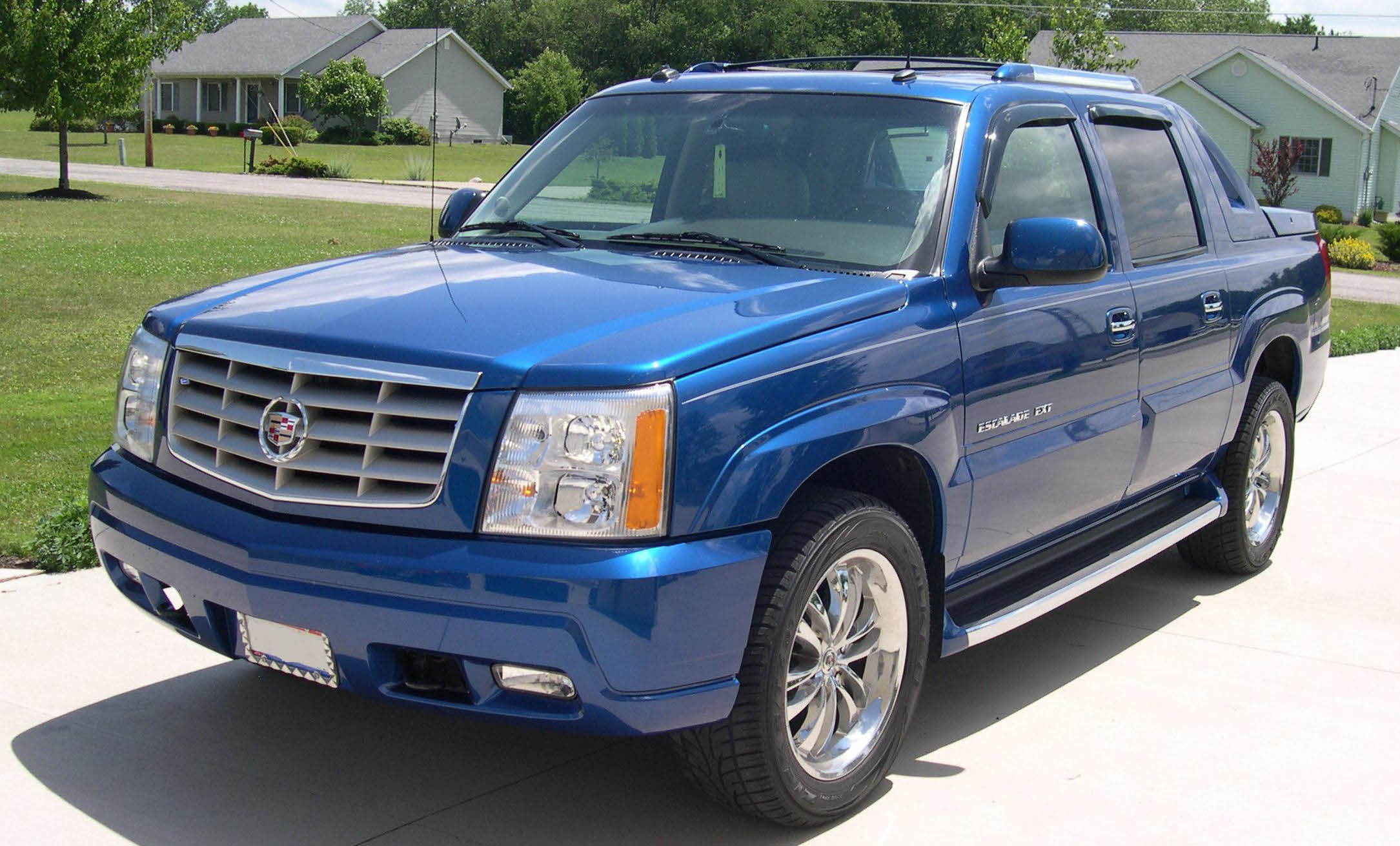
7. **Cadillac Escalade**The Cadillac Escalade is, for many, a powerful symbol of American luxury and success, embodying grandeur and robust capability. It commands attention with its imposing presence and lavish interior, offering a truly high-end SUV experience. However, beneath its aspirational image, the Escalade has unfortunately accumulated its ‘fair share of mechanical grievances’ that can detract significantly from its luxury offerings and overall reliability.
One of the most frequently reported issues concerns the transmission system. Owners have noted various ‘transmission issues that can affect the smoothness and reliability of the driving experience,’ which is a critical aspect for any luxury vehicle, especially one designed for comfortable, long-distance travel. These mechanical inconsistencies can disrupt the composed ride expected from a vehicle of its stature, leading to driver dissatisfaction.
Furthermore, problems with the infotainment system are also a common complaint, including ‘screen freezes and unresponsive interfaces.’ In a vehicle where sophisticated technology is a key selling point, such persistent issues with the user interface can significantly diminish the luxury experience. These recurrent functional shortcomings not only compromise the vehicle’s usability but also reflect negatively on the overall reliability of what is unequivocally considered a flagship model for Cadillac.
Car Model Information: 2020 Cadillac Escalade Platinum
Name: Cadillac Escalade
Caption: Fifth generation Cadillac Escalade
Manufacturer: Cadillac
Production: 1998–present,2002–present (ESV),2001–2013 (EXT),2008–2013 (Hybrid)
ModelYears: 1999–2000,2002–present
Class: Full-size,luxury car,sport utility vehicle
Related: ubl
Layout: Front-engine, rear-wheel drive layout,Front-engine, four-wheel drive layout
Categories: 2000s cars, 2010s cars, 2020s cars, All-wheel-drive vehicles, All Wikipedia articles in need of updating
Summary: The Cadillac Escalade is a full-size luxury SUV manufactured by General Motors and marketed by Cadillac as its first major entry into the SUV market. The Escalade was introduced for the 1999 model year in response to an influx of new luxury SUVs in the late 1990s including the Mercedes-Benz M-Class, Range Rover, Lexus LX, and Ford’s 1998 debut of the Lincoln Navigator. The Escalade project went into production only ten months after it was approved. The Escalade is built in Arlington, Texas.
The term “escalade” refers to a siege warfare tactic of scaling defensive walls or ramparts with the aid of ladders or siege towers. More generally, it is a French word which is the noun-equivalent form of the French verb escalader, which means “to climb or scale”.
The Escalade is currently sold in North America and select international markets (Europe and Asia) where Cadillac has official sales channels. The Escalade ESV (Escalade Stretch Vehicle) is sold in North America, Russia, and the Middle East, but is only available by special order in some international markets. The right-hand-drive Escalade and Escalade ESV are available through third-party conversion specialists without official agreement with Cadillac in Australian, Oceanic, and Japanese markets.
On August 8, 2023, GM presented the Escalade IQ, an all-electric version of the Escalade, and the third model in Cadillac’s EV line, after the Celestiq, and Lyriq. It is expected to go on sale in late 2024 for the 2025 model year, with a starting price of $130,000.
The Escalade has gone through five generations, the most recent (the fifth) prsented in 2021, noted for its technology and self-driving capability. The fifth generation Escalade is nearly two metres high, and was criticized by The Verge for its excessive size and hazard to pedestrians.
Get more information about: Cadillac Escalade
Buying a high-performing used car >>>
Brand: Cadillac Model: Escalade
Price: $43,087 Mileage: 90,884 mi.
Read more about: Bawse-Level Bling: The 10 Most Shocking Custom Paint Jobs in Rick Ross’s Legendary Car Collection
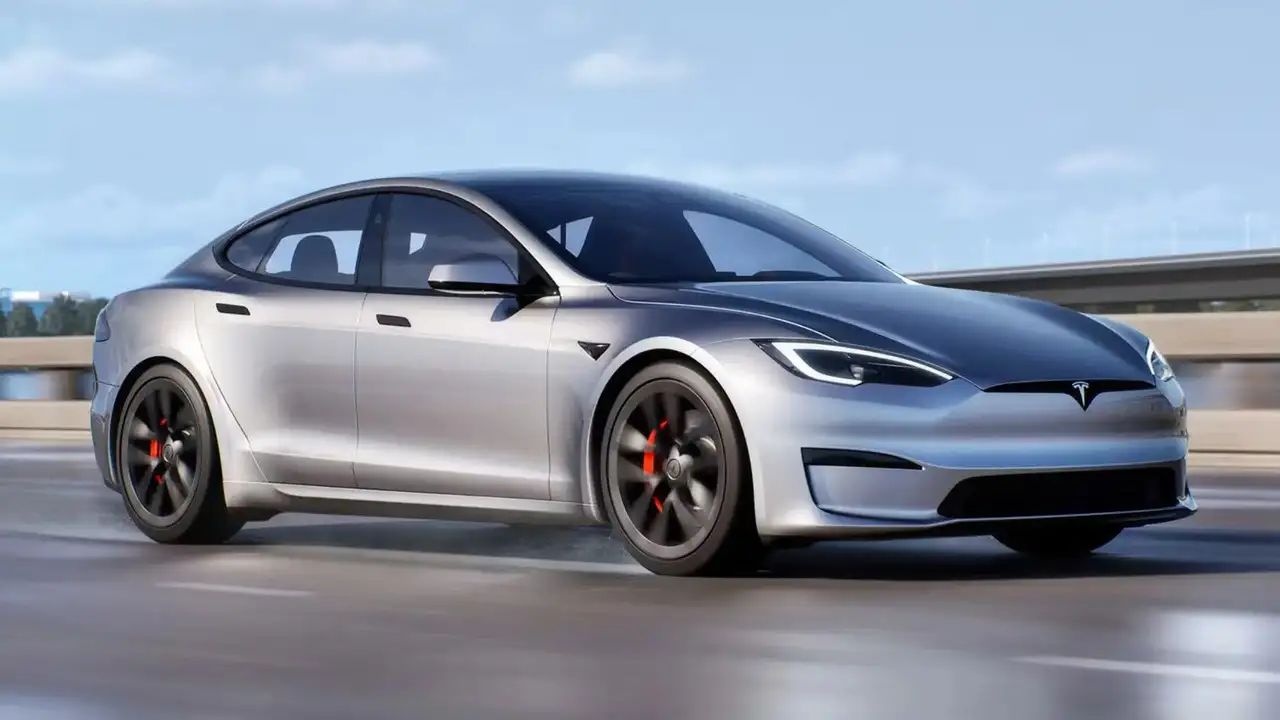
8. **Tesla Model S**The Tesla Model S, often celebrated as a pioneer in the electric vehicle revolution, stands at the forefront of automotive innovation and technology. Its sleek design, blistering performance, and advanced autonomous driving capabilities have captured the imagination of many. However, despite its forward-thinking approach, the Model S has faced persistent scrutiny regarding its overall build quality and long-term reliability.
Owners frequently report issues that range from minor aesthetic inconsistencies to more significant functional problems. These often manifest as misaligned body panels, where gaps between different sections of the car’s exterior are uneven, detracting from the premium finish expected of a luxury vehicle. Similarly, interior trim pieces can be found ill-fitting or prone to loosening, further diminishing the perceived meticulous craftsmanship.
Beyond these tangible fit-and-finish concerns, more severe electrical problems have also been noted, impacting critical aspects of the vehicle’s operation. Such electrical glitches can directly affect the Model S’s performance, potentially compromising its responsive driving dynamics or the efficiency of its electric powertrain. Moreover, these issues can extend to vital safety features, raising concerns about the car’s dependability in crucial situations.
These recurring build quality concerns are a significant point of contention for owners, many of whom have invested in the Tesla brand specifically for its high-end appeal and cutting-edge engineering. They highlight the substantial challenges Tesla encounters as it strives to scale its production to meet surging demand while simultaneously maintaining stringent quality control standards across its manufacturing processes.
Car Model Information: 2020 Lexus RX 350 Base
Name: Tesla Model S
ModelYears: 2013–present
Alt: A front-three quarter view of a gray Model S
Caption: #2016–2019: First major update
Designer: Franz von Holzhausen
Weight: cvt
Height: cvt
Width: cvt
Length: cvt
Wheelbase: cvt
ElectricRange: cvt
Battery: kWh,lithium-ion battery
Motor: Unbulleted list
Transmission: Reduction drive
Related: Tesla Model X
Layout: Rear-motor, rear-wheel drive,Dual-motor, all-wheel-drive,Tri-motor, all-wheel-drive layout
BodyStyle: liftback,sedan (automobile)
Class: Full-size car
Assembly: Unbulleted list
Production: June 2012 – present
Manufacturer: Tesla, Inc.
Sp: us
Chassis: Unibody
Categories: 2020s cars, All-wheel-drive vehicles, All Wikipedia articles written in American English, All articles containing potentially dated statements, Articles containing potentially dated statements from 2025
Summary: The Tesla Model S is a battery-electric, four-door full-size car produced by the American automaker Tesla since 2012. The automaker’s second vehicle and longest-produced model, the Model S has been described as one of the most influential electric cars in the industry. Car and Driver named it one of the best cars of the year in 2015 and 2016. Its various accolades include the Motor Trend Car of the Year Award in 2013.
Tesla started developing the Model S around 2007 under the codename WhiteStar, with Henrik Fisker appointed as lead designer for the project. After a dispute with Elon Musk, Tesla’s CEO, Fisker was replaced by Franz von Holzhausen who, by 2008, had designed the production Model S’s exterior. Tesla unveiled a prototype of the vehicle in March 2009 in Hawthorne, California. In 2010, Tesla acquired a facility in Fremont, California, to produce the Model S, which was previously owned by General Motors and Toyota. Series manufacture of the car officially began at the Tesla Fremont Factory in June 2012. Tesla carried out the final assembly for European markets at its facilities in Tilburg, Netherlands, between 2013 and 2021.
Constructed mostly of aluminum, the Model S shares 30 percent of its components with the Model X—a crossover SUV that was introduced in 2015. The Model S has undergone several updates during its production, the most prominent ones occurring in 2016 and 2021. These updates have usually included modifications to the motor, such as changes to power or torque, revised exterior elements, and refreshed interior features. One such change included the 2015 introduction of Tesla Autopilot—a partial vehicle automation advanced driver-assistance system. The 2021 update led to the introduction of the high-performance, three-motor Plaid—Tesla’s most powerful model.
In 2015, the Model S was the world’s best-selling plug-in electric vehicle. In 2012, it was included on Time’s list of the Best Inventions of the Year, and the magazine later included it on its list of the 10 Best Gadgets of the 2010s in 2019. In 2014, The Daily Telegraph described the Model S as a “car that changed the world”. Road & Track argued that, with the introduction of the Plaid and features such as the yoke steering wheel, Tesla managed to turn the Model S into “perhaps one of the worst [cars in the world]”.
Get more information about: Tesla Model S
Buying a high-performing used car >>>
Brand: Tesla Model: Model S
Price: $30,981 Mileage: 81,179 mi.
Read more about: Hold Up! 12 Electric Vehicles That Have Owners Wishing for a Do-Over
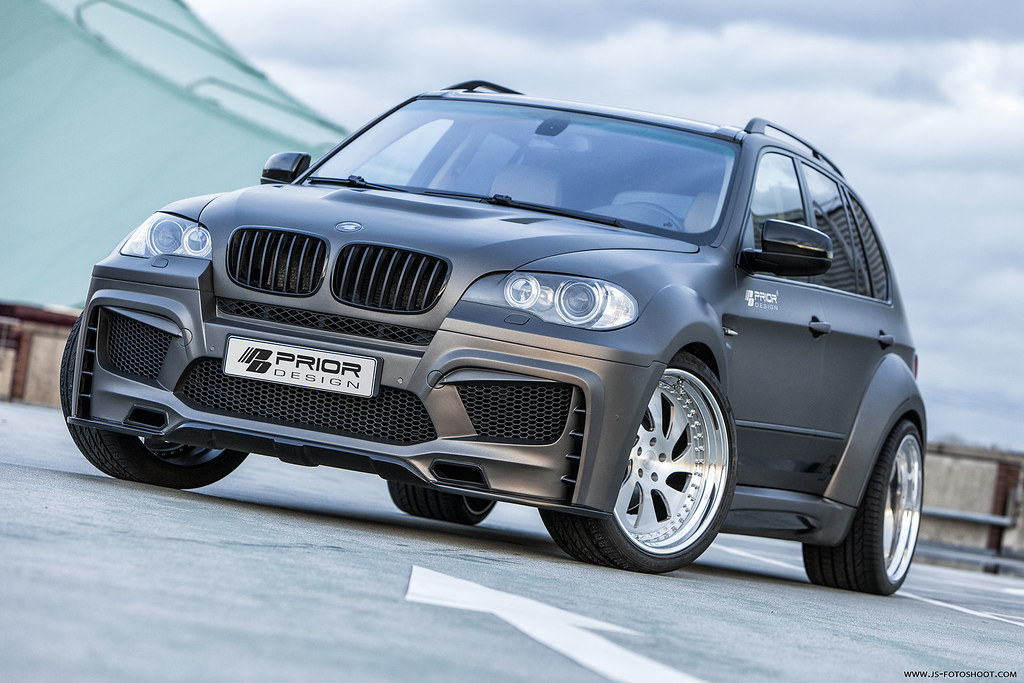
9. **BMW X5**The BMW X5 has long been a benchmark in the luxury SUV segment, skillfully combining dynamic driving performance with opulent comfort and practical utility. Its commanding presence and sophisticated engineering appeal to a broad spectrum of SUV enthusiasts who seek a vehicle that excels in both urban environments and on extended journeys. Yet, even this highly regarded model is not immune to reliability criticisms, with specific mechanical issues frequently surfacing.
Among the most commonly reported problems are leaks within the cooling system, a critical component for engine health and longevity. These leaks, if left unaddressed, can lead to serious engine overheating and subsequent damage, transforming a routine drive into a potentially costly and inconvenient event. Such issues directly contradict the expectation of robust German engineering and meticulous design.
Furthermore, failures in the sophisticated air suspension system are another prevalent concern for X5 owners. When this system malfunctions, it can severely compromise ride quality, leading to a noticeably harsher or uneven driving experience that undermines the very essence of luxury comfort. These mechanical setbacks not only necessitate expensive repairs but also translate into frequent, unwelcome visits to service centers, leading to considerable frustration for owners. These experiences significantly challenge the legendary reliability and engineering excellence traditionally associated with the BMW marque.
Car Model Information: 2022 BMW X5 xDrive40i
Name: BMW X5
Manufacturer: BMW
Class: Mid-size,luxury vehicle,crossover SUV
BodyStyle: SUV
Production: 1999–present
Layout: Front-engine, four-wheel-drive layout,Front-engine, rear-wheel-drive layout
Categories: 2000s cars, 2010s cars, All-wheel-drive vehicles, All articles with unsourced statements, Articles with short description
Summary: The BMW X5 is a mid-size luxury crossover SUV produced by BMW. The X5 made its debut in 1999 as the E53 model. It was BMW’s first SUV. At launch, it featured all-wheel drive and was available with either a manual or automatic gearbox. The second generation was launched in 2006, and was known internally as the E70. The E70 featured the torque-split capable xDrive all-wheel drive system mated to an automatic gearbox. In 2009, the X5 M performance variant was released as a 2010 model.
BMW marketed the X5 officially as a “Sports Activity Vehicle” (SAV), rather than an SUV, to indicate its on-road handling capability despite its large dimensions. The X5 signaled a shift away from the utilisation of body-on-frame construction, in favour of more modern monocoque chassis construction. Although the Mercedes-Benz M-Class was introduced more than a year prior to the X5, the X5 was the first to utilise a monocoque chassis. The M-Class used body-on-frame construction until its second generation.
The X5 is primarily manufactured in North America, at BMW Group Plant Spartanburg. Assembly operations also took place in Russia by Avtotor until February 2022, along with operations in India, Indonesia, Malaysia, and Thailand. The X5 is also modified for armoured security versions, at the BMW de México Toluca plant.
The automaker’s SAV series, which was started by the X5, has expanded with derivations of other number-series BMWs. This began in 2003 with the X3, and continued in 2008 with the X6 (which shares its platform with the X5).
Get more information about: BMW X5
Buying a high-performing used car >>>
Brand: BMW Model: X5
Price: $37,999 Mileage: 39,525 mi.
Read more about: 15 Vehicles Millennials Are Steering Clear Of: Unpacking the Generational Divide in Automotive Appreciation
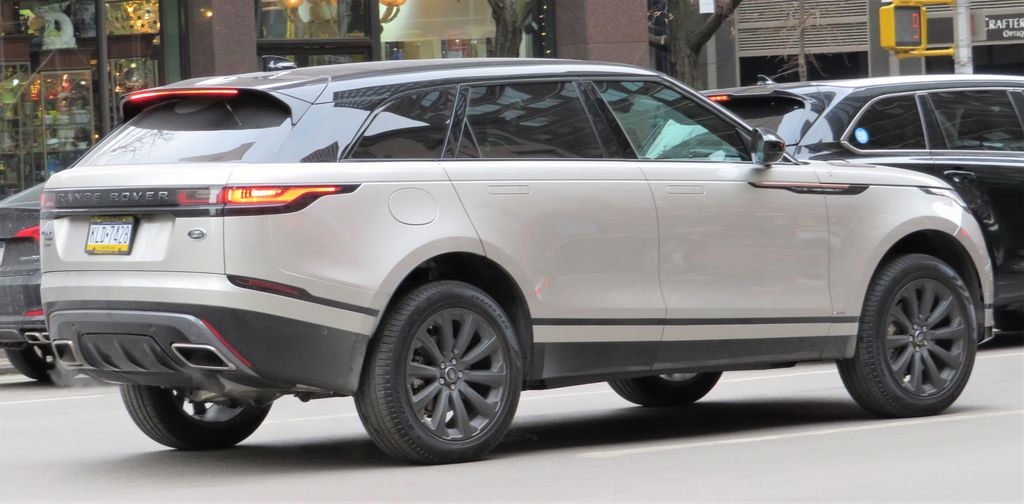
10. **Range Rover Velar**The Range Rover Velar carved out a distinctive niche in the luxury SUV market, captivating buyers with its strikingly modern design and a sleek, minimalist aesthetic. Its sophisticated technology suite and refined cabin promised an unparalleled premium experience, blending traditional Range Rover capability with a contemporary, urban appeal. However, beneath this polished exterior, the Velar has frequently been plagued by persistent technical issues, impacting its overall reliability.
A significant area of concern revolves around its advanced air suspension system. Owners often report malfunctions with this complex system, which can lead to a compromised ride quality that fails to deliver the smooth, composed experience expected from a premium SUV. These issues can also result in costly and time-consuming repairs, detracting from the vehicle’s perceived value and the convenience of ownership.
Adding to these mechanical woes, the Velar’s sophisticated infotainment software has been widely criticized for being both unreliable and buggy. Drivers frequently encounter system freezes, unresponsive touchscreens, or glitches that interfere with essential functions like navigation, audio, and vehicle settings. These technical setbacks do more than just inconvenience; they can result in a frustrating driving experience and, in some cases, potential safety risks if critical information or controls become unavailable. Such ongoing problems inevitably diminish the Velar’s appeal as a truly premium luxury SUV, raising substantial concerns about its long-term reliability and the true cost of ownership.
Car Model Information: 2020 Lexus RX 350 Base
Name: Land Rover Range Rover Velar
Caption: 2017 Range Rover Velar First Edition D3
Manufacturer: Jaguar Land Rover
ModelCode: L560
Production: 2017–present
Assembly: Solihull
Designer: Gerry McGovern
Class: Compact executive car,crossover SUV
BodyStyle: Sport utility vehicle
Related: Jaguar XE,Jaguar XF (X260),Jaguar F-Pace
Layout: Front-engine, four-wheel-drive layout
Engine: ubl
Motor: ubl
Abbr: on
Transmission: ZF 8HP transmission
Drivetrain: Mild hybrid,PHEV
Battery: Kilowatt-hour,Lithium-ion battery
Wheelbase: 2874 mm
Length: 4803 mm
Width: 2032 mm
Height: 1665 mm
Weight: convert
Sp: uk
Charging: 35 kW DC (PHEV 2023)
Categories: All-wheel-drive vehicles, All Wikipedia articles written in British English, Articles with short description, Cars introduced in 2017, Cars of India
Summary: The Land Rover Range Rover Velar, generally known as the Range Rover Velar, () is a crossover SUV produced by British automotive company Jaguar Land Rover under their Land Rover marque. The fourth model in the Range Rover line, the Velar was unveiled on 1 March 2017 in London, England. The Velar was released in the summer of 2017. The name Velar had previously been used for a series of pre-production first-generation Range Rovers in 1969.
The Range Rover Velar was named “World’s Most Beautiful Car” in 2018, receiving the design award at the 2018 World Car Awards.
The vehicle received a facelift in 2023.
Get more information about: Range Rover Velar
Buying a high-performing used car >>>
Brand: Range Rover Model: Velar
Price: $30,981 Mileage: 81,179 mi.
Read more about: The Real Cost of Ownership: 10 Sedans That Become Money Pits After Five Years (And How to Avoid Them)
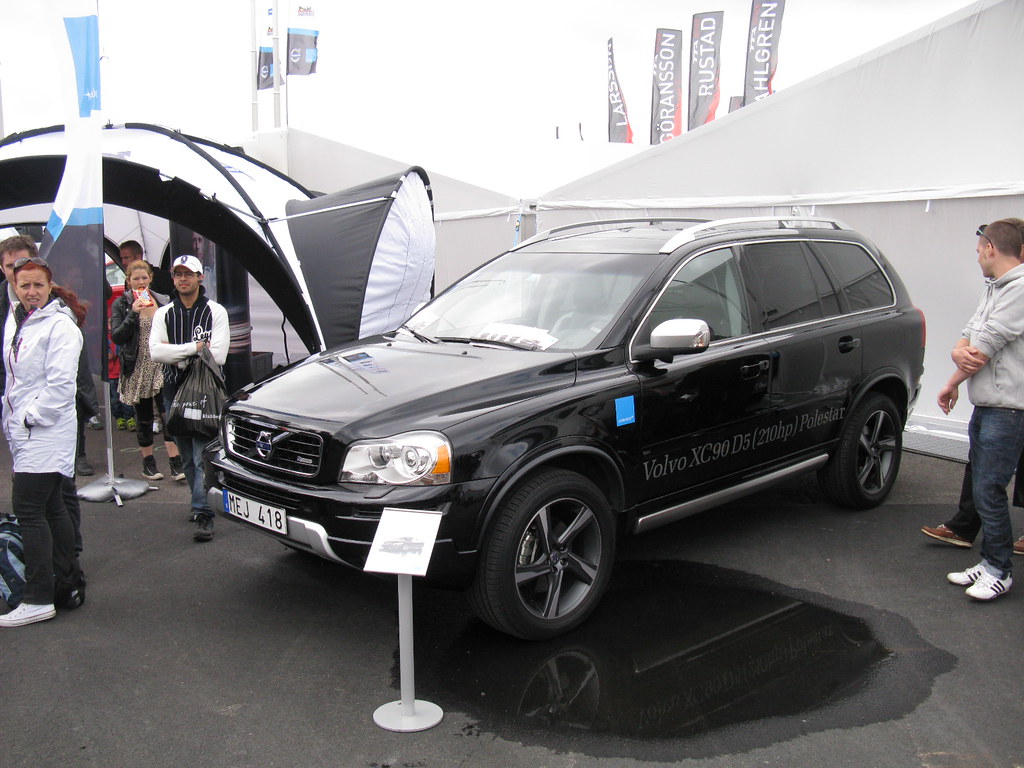
11. **Volvo XC90**The Volvo XC90 commands respect in the luxury SUV segment, revered globally for its unwavering commitment to passenger safety and its elegant, clean Scandinavian design ethos. It has consistently set benchmarks for safety features and offers a spacious, thoughtfully appointed interior that exudes a sense of serene sophistication. However, despite its strong foundational principles, the XC90 has frequently been subject to critical reliability concerns, primarily stemming from its complex electrical and software systems.
Owners routinely report a variety of electrical issues and software malfunctions that can impact critical vehicle systems. These aren’t minor annoyances; they frequently extend to fundamental features such as the navigation system, leading to incorrect routing or system crashes, and more concerningly, to the advanced auto-braking features, which are paramount to Volvo’s safety reputation. Such glitches compromise not only the practical functionality of the vehicle but also its core safety promise.
This raises serious questions about the vehicle’s dependability in real-world driving scenarios and directly challenges Volvo’s long-standing reputation for engineering reliability. For a brand that has built its prestige on safety and consistent performance, these recurring electronic woes can be particularly disappointing for discerning buyers.
Further complicating the ownership experience, software updates, which are intended to resolve existing issues and enhance system performance, sometimes inadvertently introduce new problems. This creates an unpredictable and often frustrating cycle for consumers who expect steadfast consistency and seamless operation from their luxury vehicles. The high frequency of these issues means more trips to the dealership, interrupting daily life and increasing the hidden costs of ownership.
Car Model Information: 2016 Volvo XC90 T6 Momentum
Name: Volvo XC90
Caption: 2025 Volvo XC90
Manufacturer: Volvo Cars
Production: 2002–present
Class: Executive car,crossover SUV
BodyStyle: SUV
Layout: ubl
Categories: 2010s cars, 2020s cars, All-wheel-drive vehicles, All articles with dead external links, All articles with unsourced statements
Summary: The Volvo XC90 is a mid-size luxury SUV manufactured and marketed by Volvo Cars since 2002 and in its second generation.
The first generation was introduced at the 2002 North American International Auto Show and used the Volvo P2 platform shared with the first generation Volvo S80 and other large Volvo cars. It was manufactured at Volvo’s Torslandaverken in Sweden. Volvo moved production equipment of the first generation to China and ended Swedish production at the end of 2014, renaming the car as the Volvo XC Classic (or Volvo XC90 Classic).
At the end of 2014, the second generation XC90 was introduced. It is based on a new global platform, the Scalable Product Architecture (SPA). Both generations of the XC90 have won Motor Trend’s SUV of the Year award in their debuts.
In late 2022, the electric-only EX90 was introduced as the successor of the XC90. However, in September 2024, Volvo launched the second facelift of XC90, and stated that both models would be sold together for the foreseeable future.
Get more information about: Volvo XC90
Buying a high-performing used car >>>
Brand: Volvo Model: XC90
Price: $7,750 Mileage: 171,243 mi.
Read more about: Hold Up! 12 Electric Vehicles That Have Owners Wishing for a Do-Over
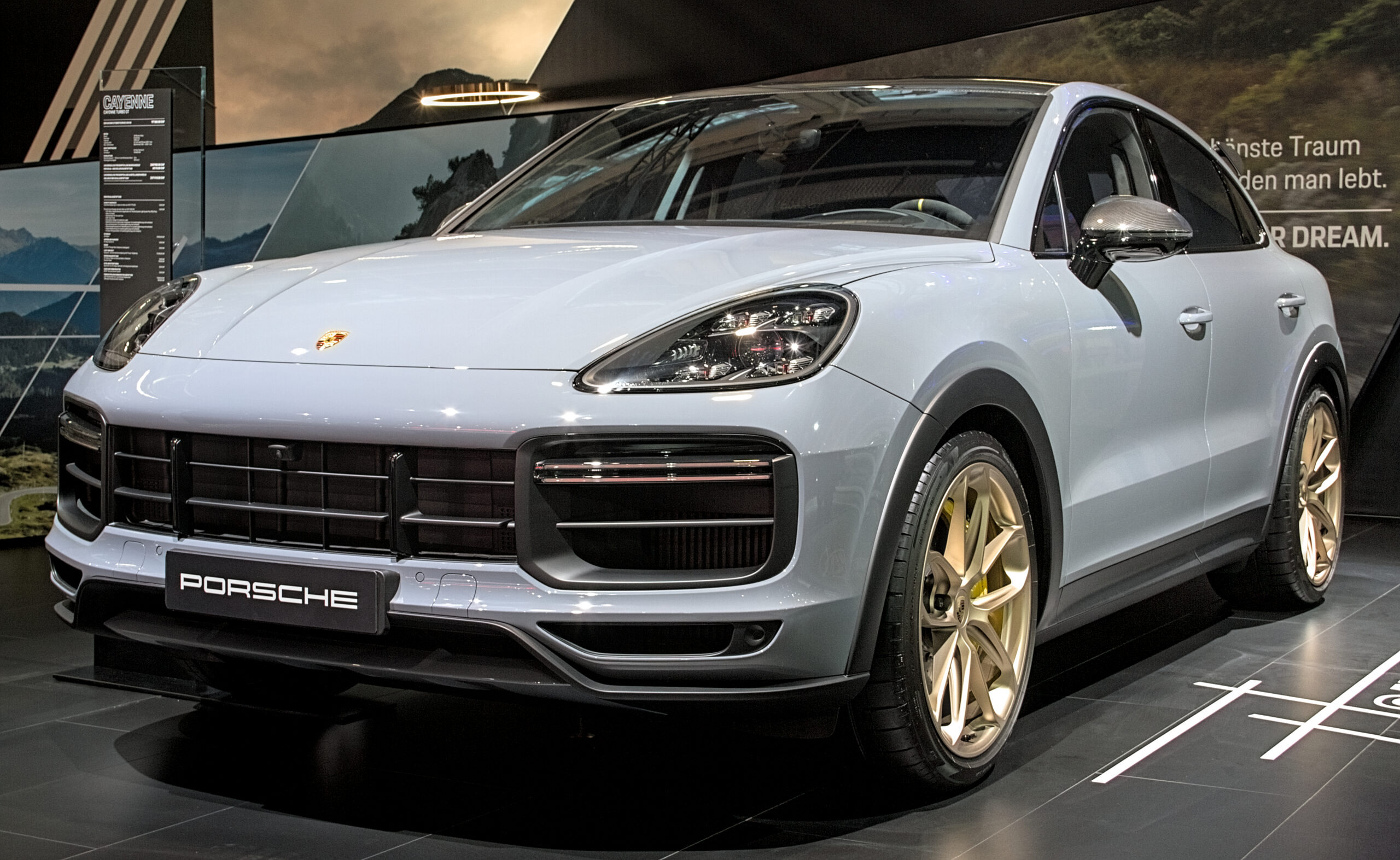
12. **Porsche Cayenne**The Porsche Cayenne occupies a unique and highly coveted position in the automotive world, renowned for its extraordinary ability to fuse genuine sports car performance with the practical versatility of a luxury SUV. It promises an exhilarating driving experience alongside premium comfort, making it a compelling choice for enthusiasts who refuse to compromise on either front. However, even within Porsche’s vaunted lineage, the Cayenne has encountered specific reliability challenges that can detract from its otherwise stellar reputation.
A significant area of concern for many owners pertains to transmission problems, particularly evident in models equipped with the automatic gearbox. These issues can manifest as jerky shifts, hesitant responses, or an uncharacteristically rough driving experience that is utterly out of place in a vehicle engineered for such precision and smoothness. This inconsistent power delivery can undermine the very essence of the refined performance Porsche is celebrated for.
Moreover, the financial implications of owning a Porsche Cayenne extend beyond its initial purchase price. Repairs and replacement parts for the Cayenne are notoriously expensive, often significantly higher than those for competitors in its segment. This heightened cost of maintenance can substantially add to the total cost of ownership over time, presenting an unexpected burden for owners. Such issues are particularly disappointing for those who invest in a Porsche, expecting not only unparalleled driving pleasure but also the assurance of high-quality engineering and robust long-term dependability.
Car Model Information: 2020 Porsche Cayenne Base
Name: Porsche Cayenne
Manufacturer: Porsche
Production: August 2002–present
ModelYears: 2003–present
Class: crossover SUV
Layout: Front-engine, four-wheel-drive
Categories: 2010s cars, 2020s cars, All-wheel-drive vehicles, All articles needing additional references, All articles with dead external links
Summary: The Porsche Cayenne is a series of automobiles manufactured by the German company Porsche since 2002. It is a luxury crossover SUV, and has been described as both a full-sized and a mid-sized vehicle. The first generation was known within Porsche as the Type 9PA (955/957) or E1. It was the first V8-engined vehicle built by Porsche since 1995, when the Porsche 928 was discontinued. It is also Porsche’s first off-road variant vehicle since its Super and Junior tractors of the 1950s, as well as the first production Porsche with four doors. Since 2014, the Cayenne has been sold alongside a smaller Porsche SUV, the Macan.
The second-generation Cayenne (Type 92A or E2) was unveiled at the 2010 Geneva Motor Show in March. The Cayenne shares its platform, body frame, doors, and electronics with the Volkswagen Touareg and Audi Q7. It received a facelift in 2014 with minor external changes, and introduced a new plug-in E-Hybrid version with its public launch at the Paris Motor Show. Since 2008, all engines have featured direct injection technology. The third generation (Type 9YA or E3) was unveiled in 2017 in the German city of Stuttgart.
Get more information about: Porsche Cayenne
Buying a high-performing used car >>>
Brand: Porsche Model: Cayenne
Price: $42,290 Mileage: 35,242 mi.
Read more about: 15 Vehicles Millennials Are Steering Clear Of: Unpacking the Generational Divide in Automotive Appreciation
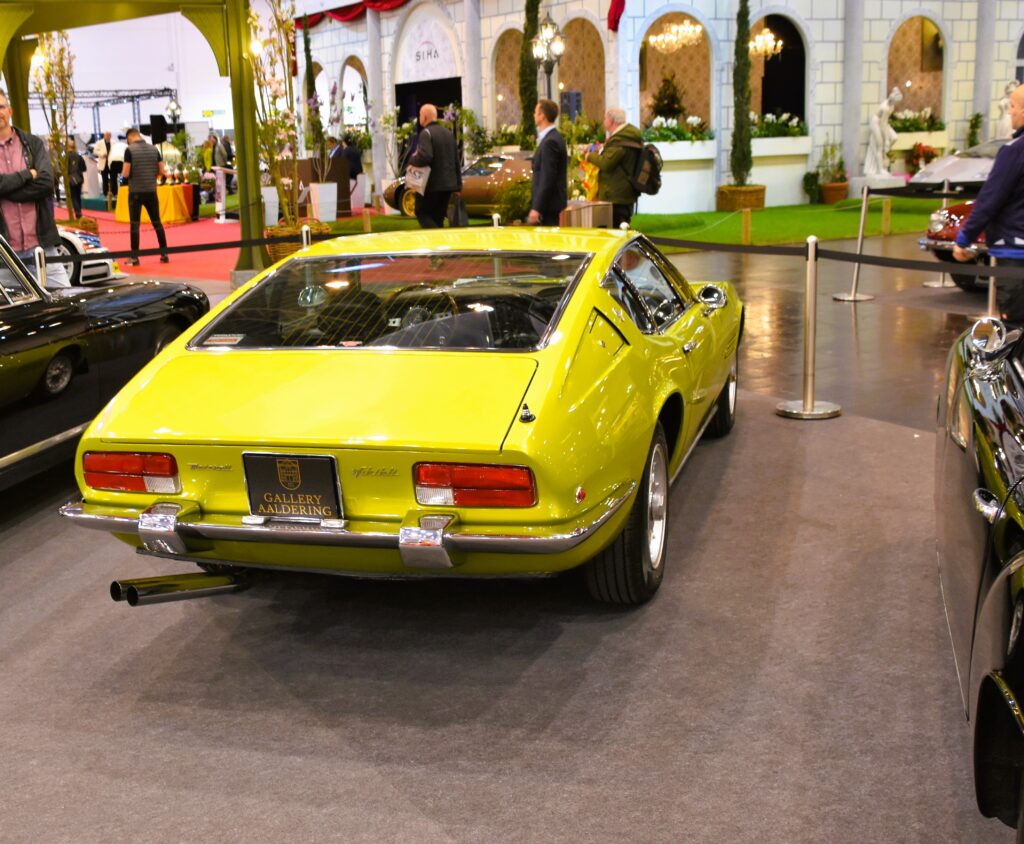
13. **Maserati Ghibli**The Maserati Ghibli makes a bold statement in the executive sedan market, blending distinctive Italian luxury with an unmistakably sporty performance pedigree. Its evocative styling and the stirring sound of its engine are designed to captivate and thrill, offering a more flamboyant alternative to its German rivals. Yet, beneath this captivating allure, the Ghibli has unfortunately struggled with reliability, leading to a less than ideal ownership experience for some.
A prevalent category of issues involves electronic malfunctions, which have been widely reported by owners. These problems are not isolated to minor features; they can broadly affect everything from the central infotainment system, leading to frustrating glitches and unresponsiveness, to crucial engine management components, which can impact performance and efficiency. Such widespread electronic woes undermine the sophisticated image Maserati strives to project.
These recurring reliability concerns, coupled with a propensity for rapid depreciation, make the Ghibli a considerably less appealing option for buyers whose primary objective is a dependable luxury car that retains its value. The initial allure of its iconic brand and striking design is frequently overshadowed by the potential for exceptionally high maintenance costs and an unpredictable reliability record. For a luxury sedan, these factors are critical considerations that can transform the dream of Italian motoring into a source of considerable frustration.
Car Model Information: 2014 Maserati Ghibli Base
Name: Maserati Ghibli
Caption: 2018 Maserati Ghibli GranLusso
Manufacturer: Maserati
Assembly: Modena,Grugliasco,Turin
Class: Grand tourer,Executive car
BodyStyle: fastback,coupé,Roadster (automobile),Sedan (automobile)
Production: AM115: 1967–1973,AM336: 1992–1998,M157: 2013–2023
Categories: 1970s cars, 1990s cars, 2010s cars, Articles with short description, CS1 Italian-language sources (it)
Summary: Maserati Ghibli is the name of three different cars produced by Italian automobile manufacturer Maserati: the AM115, a V8 grand tourer from 1967 to 1973; the AM336, a V6 twin-turbocharged coupé from 1992 to 1998; and the M157, an executive saloon from 2013 to 2023.
Ghibli is the Libyan Arabic name for the hot dry south-westerly wind of the Libyan desert.
Get more information about: Maserati Ghibli
Buying a high-performing used car >>>
Brand: Maserati Model: Ghibli
Price: $10,980 Mileage: 83,121 mi.
Read more about: From Showroom Shame to Collector’s Dream: The Flops That Became Automotive Icons
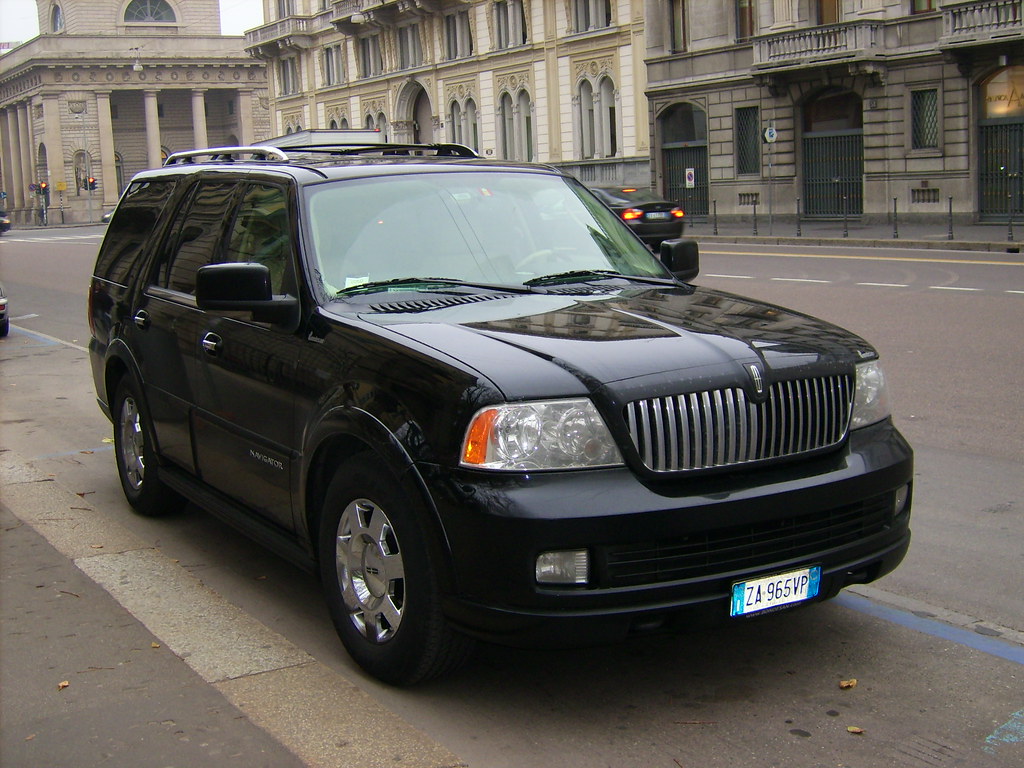
14. **Lincoln Navigator**The Lincoln Navigator stands as a quintessential embodiment of American luxury, offering an impressive blend of immense interior space, robust towing capabilities, and a host of sophisticated features. Its grand presence and plush cabin are designed to provide a truly premium experience, appealing to buyers who seek comfort, capability, and uncompromised opulence in a full-size SUV. However, despite its luxurious aspirations, the Navigator has garnered criticism for several significant reliability issues.
Chief among these are persistent transmission problems, which owners have reported can impair both the vehicle’s overall performance and its long-term reliability. These issues can manifest as rough shifts, delays in engagement, or a general lack of smoothness that directly conflicts with the refined driving experience expected from a high-end luxury SUV. Such mechanical inconsistencies can quickly erode driver satisfaction and confidence.
Furthermore, electrical problems are also a frequent complaint, particularly affecting the vehicle’s advanced navigation and entertainment systems. These glitches can lead to system freezes, unresponsiveness, or outright failure of features that are central to the luxury experience. Such issues not only diminish the overall enjoyment and convenience of the vehicle but also raise serious concerns about the Navigator’s long-term dependability. For buyers making a substantial investment in a flagship luxury SUV, consistent reliability is paramount, and these recurring shortcomings can be a significant deterrent.
Car Model Information: 2022 Lincoln Navigator Reserve
Name: Lincoln Navigator
Manufacturer: The Lincoln Motor Company
Caption: 2019 Lincoln Navigator
Production: May 1997–present
ModelYears: 1998–present
Class: Full-size,luxury SUV
BodyStyle: 5-door SUV
Related: Ford Expedition,Ford F-Series
Layout: Front-engine, rear-wheel-drive layout,rear-wheel drive
Assembly: Wayne, Michigan
Categories: 2000s cars, 2010s cars, 2020s cars, All-wheel-drive vehicles, All Wikipedia articles written in American English
Summary: The Lincoln Navigator is a full-size luxury SUV marketed and sold by the Lincoln Motor Company brand of Ford Motor Company since the 1998 model year. Sold primarily in North America, the Navigator is the Lincoln counterpart of the Ford Expedition. It is the heaviest production Lincoln ever built, and is also the Lincoln with the greatest cargo capacity and the first non-limousine Lincoln to offer seating for more than six people.
Lincoln Navigator production was sourced from 1997 to 2009 at the Michigan Assembly Plant in Wayne, Michigan. Since 2009, production has also been sourced from the Kentucky Truck Plant in Louisville, Kentucky.
Get more information about: Lincoln Navigator
Buying a high-performing used car >>>
Brand: Lincoln Model: Navigator
Price: $45,449 Mileage: 62,802 mi.
Read more about: Beyond the Blockbusters: Unpacking Jennifer Lawrence’s Astounding Car Collection, from Humble Beginnings to Hybrid Powerhouses
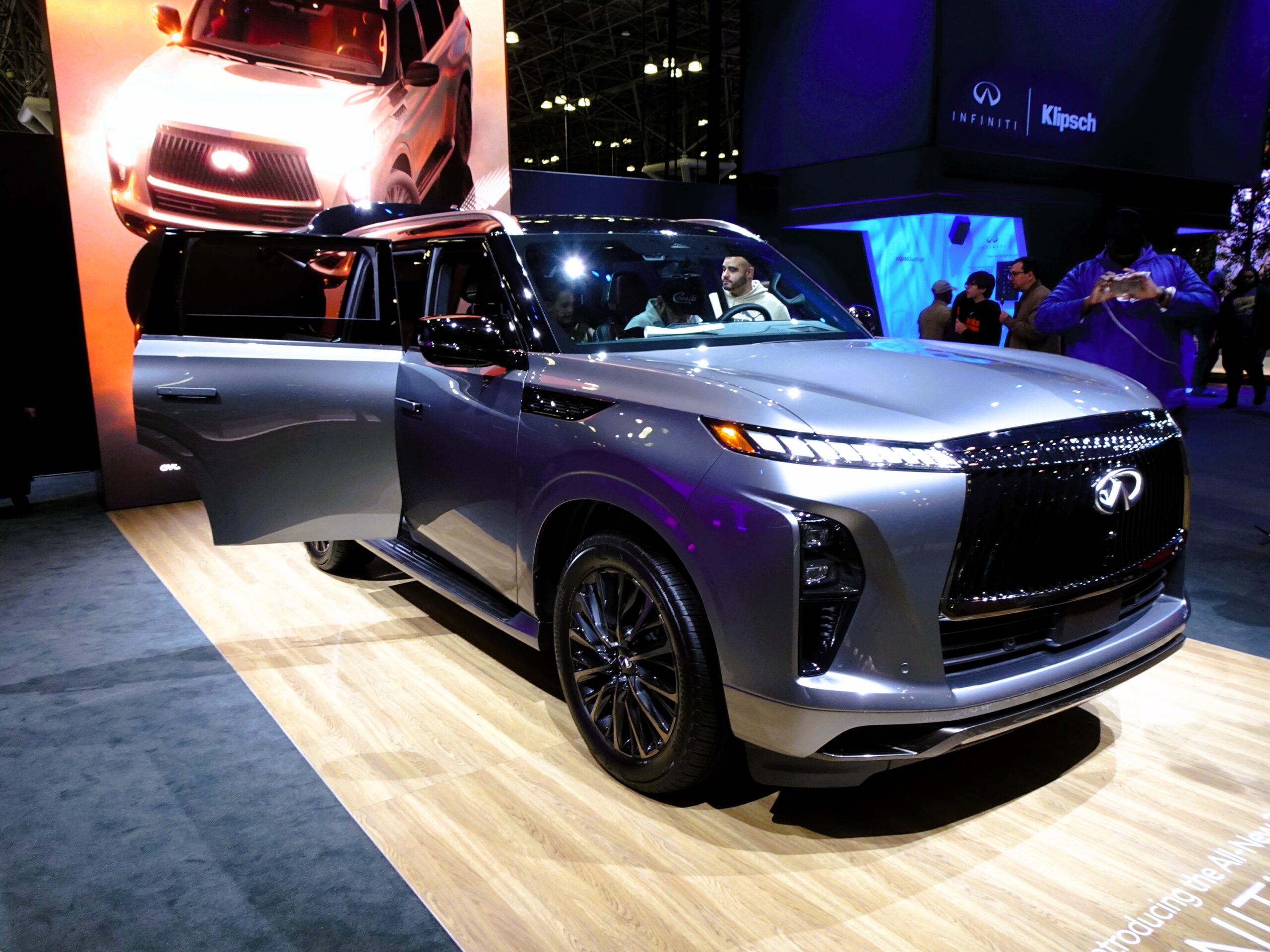
15. **Infiniti QX80**The Infiniti QX80 is a formidable presence in the large luxury SUV segment, projecting an image of commanding power and opulent comfort. It promises a refined driving experience coupled with ample space and strong performance, designed to cater to families and individuals seeking a premium, capable vehicle. However, the QX80 has frequently fallen short of these lofty expectations due primarily to a combination of mechanical and design flaws that undermine its luxury appeal.
Notable issues include a troublesome suspension system, which has been criticized for degrading ride quality. Instead of the smooth, composed ride expected from a luxury SUV, owners may experience a harsher or less controlled feel, particularly over uneven surfaces. This directly impacts passenger comfort and the overall premium perception of the vehicle. Additionally, reports of ineffective brakes are a significant concern, potentially compromising safety—a non-negotiable aspect for any vehicle, especially one of this size and capability.
These critical mechanical problems are unfortunately compounded by the QX80’s notoriously poor fuel economy. Operating a vehicle with such high fuel consumption makes it significantly less economical to own and run compared to many competitors in its class, adding to the total cost of ownership. Collectively, these issues—from a compromised ride and safety concerns to prohibitive running costs—detract significantly from the QX80’s appeal as a truly reliable and desirable luxury vehicle, leaving buyers with a sense of disappointment in what should be an exceptional offering.
While premium brands may dominate headlines for luxury and performance, this comprehensive survey highlights a critical disconnect: reliability doesn’t always align with prestige. The surprising inclusion of models from storied marques like Mercedes-Benz, Land Rover, and BMW among the least reliable vehicles on the market serves as a stark reminder that a higher price tag doesn’t inherently equate to fewer problems or a trouble-free ownership experience.
Conversely, it’s worth noting that reliability concerns are not exclusive to the upper echelons of the automotive world. Mainstream models, such as the Peugeot 3008 and Ford Kuga, also appeared on lists of less dependable vehicles, unequivocally proving that these issues span across various market segments and price points. This broader implication underscores the universal importance of thorough research, regardless of the brand.
Car Model Information: 2023 INFINITI QX80 PREMIUM SELECT
Name: Infiniti QX80
Caption: 2019 Infiniti QX80 (US)
Manufacturer: Nissan
Aka: Infiniti QX56 (2004–2013)
Production: 2004–present
Class: Full-size,luxury SUV
BodyStyle: SUV
Layout: Front-engine, rear-wheel-drive,Front-engine, four-wheel-drive
Predecessor: Nissan Pathfinder#Infiniti QX4
Chassis: Body-on-frame
Categories: 2010s cars, 2020s cars, All-wheel-drive vehicles, All articles with failed verification, All articles with unsourced statements
Summary: The Infiniti QX80 (formerly called the Infiniti QX56 until 2013) is a full-size luxury SUV marketed by Nissan’s luxury division Infiniti since the 2004 model year. The first-generation QX56 was built in the United States and is based on the first-generation Armada. The second-generation model was released in 2010 as a model produced in Japan, which used the sixth-generation Patrol (later also marketed as the second-generation Armada since 2016) as the base vehicle instead. Since the 2014 model year in 2013, the vehicle was renamed to the QX80 as Infiniti renamed their entire product line under a new nomenclature.
Get more information about: Infiniti QX80
Buying a high-performing used car >>>
Brand: Infiniti Model: QX80
Price: $48,992 Mileage: 26,319 mi.
Read more about: Buyer Beware: These 12 Crossovers Turn into Money Pits Past 80,000 Miles
For every car buyer, whether you’re eyeing a high-performance luxury saloon or a practical family SUV, these detailed rankings emphasize the paramount importance of delving into long-term ownership experiences rather than relying solely on brand reputation or initial impressions. Understanding common reliability issues specific to a model can empower you to make a far more informed decision, protecting your investment and your peace of mind. While no vehicle is truly perfect, opting for a model with a robust track record for dependability could genuinely save you from the costly repairs and unexpected headaches that can unfortunately transform a dream car into a regret.



